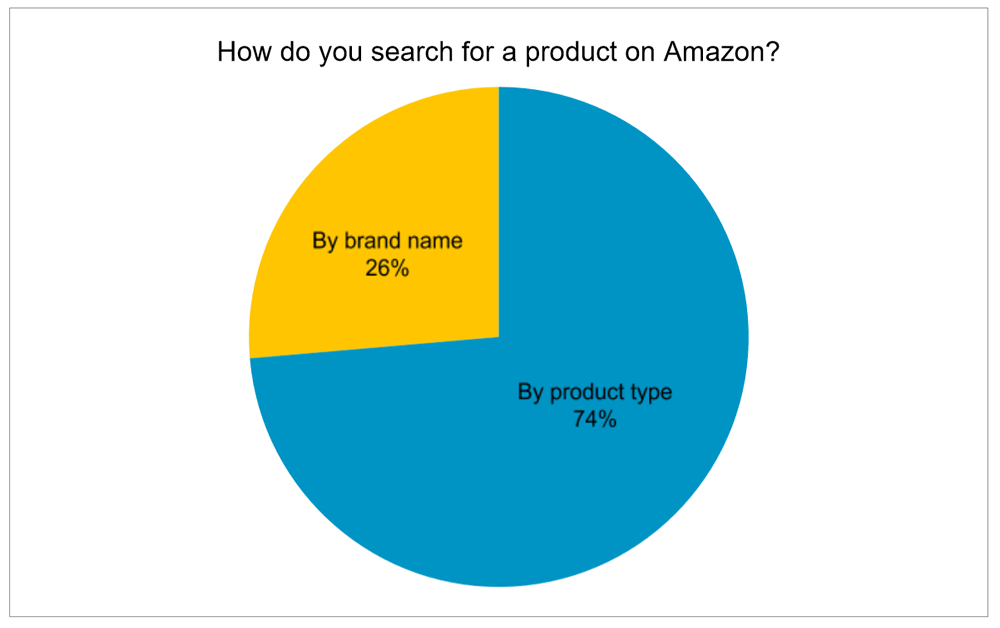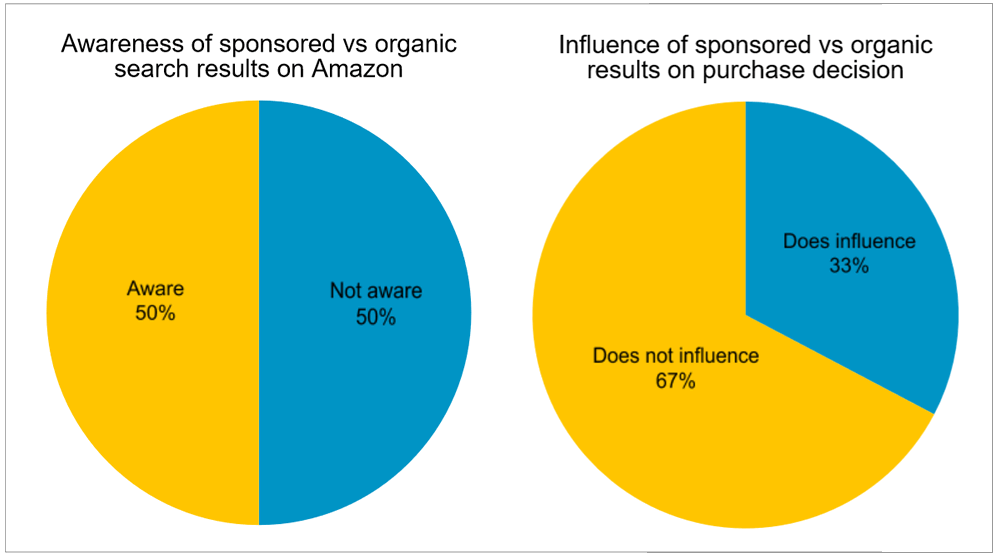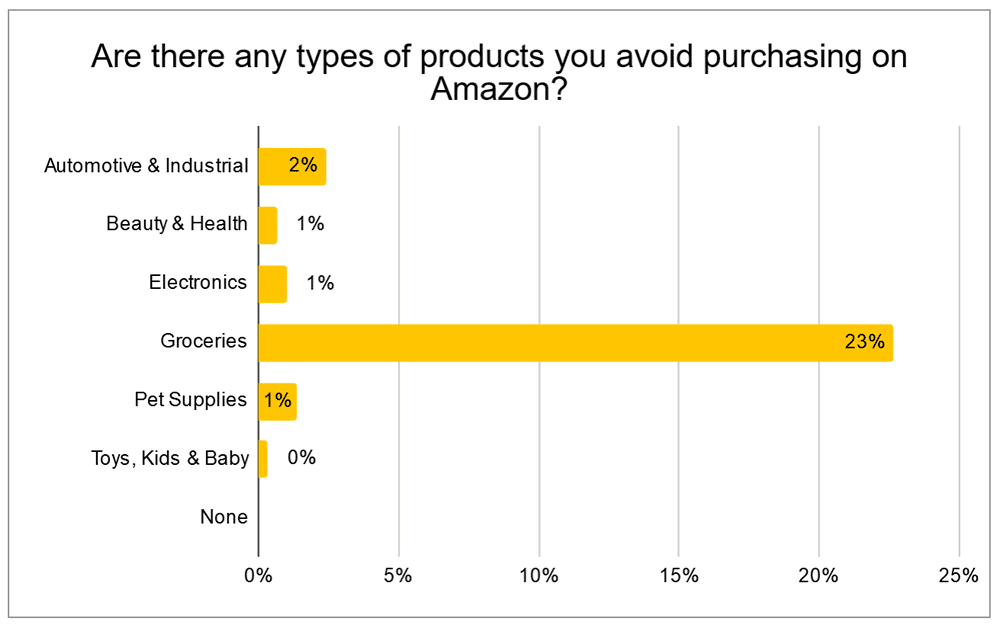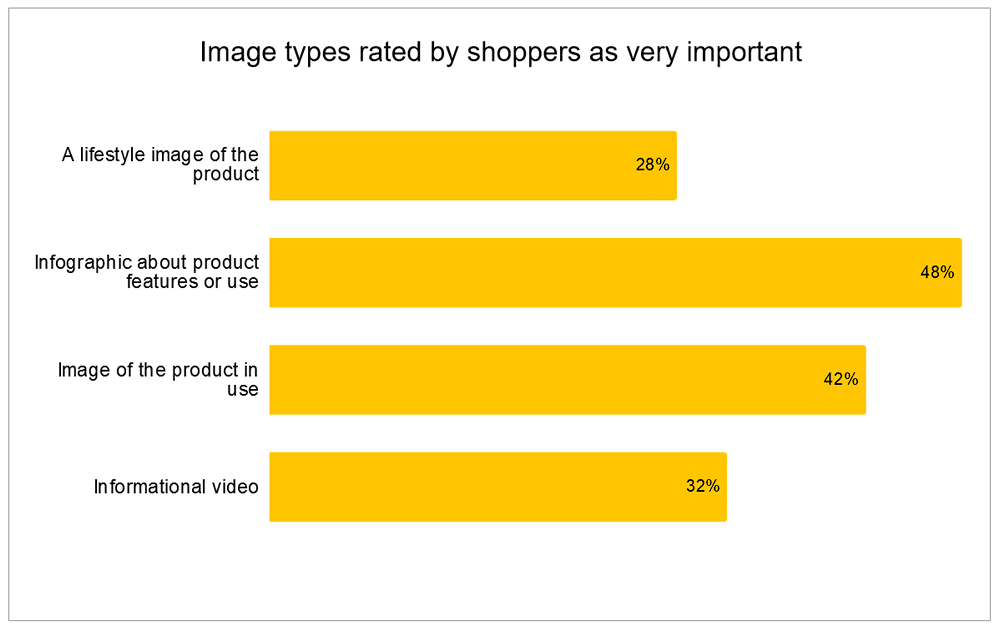Ecommerce agency Goat Consulting asked over 2,000 Amazon.com users about how they shop, with questions ranging from product research and brand preferences to the importance of price, reviews, images and advertising.
With the help of Will Tjernlund, Goat’s CMO and a successful Amazon seller in his own right, we’ve drawn out four of the most important findings for Amazon sellers.
1. Generic searches are 3x more common than brand name searches
Most Amazon shoppers start their search with a general product name or type, such as “running shoes” rather than a specific brand, such as “Nike sneakers”.

Once customers have searched for a product, most often by using generic words rather than a brand name, the most important factor in their purchasing decision is price.
After price, other factors play into a consumer’s purchasing decision. Predictably, reviews are the next most important factor.
What does this mean for Amazon sellers?
This is good news for private labelers and other Amazon sellers who don’t have strong brand recognition. Your lesser-known brand isn’t as big a disadvantage as you might think. It’s a relatively open field.
This means that rather than focusing marketing efforts on building up a brand, it’s likely more efficient to concentrate on other factors. Search is the preferred way to find products on Amazon, so sellers should work on improving their search performance:
- Research the most important keywords for the products you sell, considering alternatives to the most obvious and common search requests.
- Ensure keywords are featured prominently in titles, descriptions, answers to questions, reviews, and other areas.
- Work on your overall reputation as a high-performance seller, as this can impact your placement in Amazon search results and the Buy Box.
If you are not the exclusive seller of your products on Amazon, then understanding and optimizing the Buy Box is critical to sales:
- Regularly review competitor pricing and adjust your pricing appropriately.
- Repricing software lets you adjust prices using algorithms based on rules you set and price activity by other sellers.
On the other hand, brand-name searches will be more common in some categories than others. Don’t ignore the position of established brands completely.
Also, this does not mean that branding is not important to shoppers, just that they generally don’t begin their shopping with a brand-name search. Look at the brand values of other successful sellers in your niche and see how you can stand out. Communicate your specific brand values in your listings and product descriptions.
2. Half of Amazon shoppers don’t know about paid placements in search
Amazon’s search results often include “sponsored” items. These currently appear at the top, middle and bottom of the search results, and are paid ads set up by sellers under Amazon’s Sponsored Products program.
These paid results are indicated by a gray label above the product title, which is low-key but not hard to find once you know that it exists.
The survey found that 50% of Amazon shoppers were not aware of the difference between paid and non-paid (organic) product placements in the search results.

The survey also found that two-thirds of shoppers said their purchasing decision was not influenced by whether a product appeared as a paid or non-paid result.
What does this mean for Amazon sellers?
Some sellers might be concerned that paying for Sponsored Products ads could work against them. It’s not unusual for customers to mistrust ads, and instead skip to the “normal” search results to find the right product.
However, that should not be a large concern because:
- The survey shows that many shoppers are unaware of paid search placements, and for those that are aware of them, most do not mistrust them.
- These are pay-per-click ads so if they are ignored by consumers then there is no cost. Sellers only pay if the ads are clicked.
Many sellers report that Sponsored Products ads are an effective way to boost and maintain sales. In some categories, sellers report that these ads are essential for building a significant sales volume.
Of course, Amazon has a strong interest in the success of their advertising. They want to encourage consumers to click on the ads as that generates revenue for them.
However, if 50% of consumers are not aware of these ads and are clicking on them as if they are organic results, that could be a problem for Amazon. The ecommerce giant is being targeted by multiple antitrust investigations around the world and inadequate labeling of advertisements, if that is what is happening here, could be seen as misleading to consumers.
3. Groceries are the most avoided product category on Amazon
The survey asked if there were any particular product types that shoppers avoided buying on Amazon.
One product category stood out far ahead of any other, and that was Groceries. Almost a quarter of consumers said they steered clear of buying grocery products on Amazon, while there was very little reluctance to buy any other type of item.

Attitudes to buying groceries online differ widely around the world. Online grocery shopping has been slow to take off in the US, but it is widespread in countries including South Korea, the UK, Japan, China, and France.
Although large retailers like Walmart are now offering online ordering and home delivery, ecommerce grocery shopping in the US is still in the early stages. Consumers clearly aren’t ready to make a big leap to buying all their groceries online.
But for Amazon, grocery has been a big growth area. Amazon acquired Whole Foods Market for $13.7 billion in 2017, and have made other big moves with Amazon Pantry and Amazon Fresh. There is also a widening selection of products eligible for Amazon Prime in the main grocery category.
Despite all the attention on grocery, there’s clearly still a way to go in getting shoppers comfortable with buying food, drink and other household consumables online.
What does this mean for Amazon sellers?
The resistance of shoppers to buy grocery products on Amazon does not mean they are necessarily bad products to sell. Consider the following:
- The total market size for groceries remains very large, even excluding that 23% of shoppers.
- Shoppers who are resistant to buying groceries online could still be swayed in the future, further expanding the opportunity for sellers.
- Groceries is a very diverse category. There is a big difference between buying washing powder and buying gourmet chocolates, online or off.
More than anything, sellers should not draw blanket conclusions about the entire grocery category.
What should sellers do when selling groceries on Amazon?
Ecommerce is fantastically well-suited to selling products that have some sort of niche, exclusivity or special need. The sweet spot for Amazon sellers in groceries is likely to be with items that:
- Cater to specific dietary or nutritional needs, like gluten-free, vegan, paleo and others.
- Are difficult to find, such as brands that are popular in other countries but hard to find in the US. These can be in high demand from foreign nationals.
- Might appeal as gifts or special treats. The gift market values items that are out of the ordinary.
Balance that with an appreciation that selling groceries is not like selling toys or homewares. If 23% of shoppers avoid groceries entirely, they must have some valid concerns. The remaining 77% of shoppers will share some of those concerns as well.
Research the specific reservations that shoppers have for the products you intend to sell, and plan how you will address those. For example, two of the biggest issues for groceries are around freshness and shipping damage. To address that, you might use specialized processing and packaging, and explain on your listing what you have done to overcome these valid concerns.
4. Amazon shoppers prefer informational product images
Online shopping is very visually-led. Consumers scan the images in search results before they read the titles, and they scrutinize images on product pages to understand the features and make an assessment about quality.

Shoppers were asked to rate the importance of different types of images and media on a scale of one to seven, and the chart above shows the percentage of shoppers who rated each type as a six or a seven.
The outcome is that good product images of all types are valued by consumers, but practical images that help illustrate a product’s features were rated as more important than either lifestyle photos or informational videos. Infographics, which combine a product image with text or graphics to explain different features, were rated the highest of all.
What does this mean for Amazon sellers?
Most sellers report that more photos result in higher sales, but good quality images and videos can be time-consuming and expensive to produce. While some sellers are capable of good-quality product photography themselves, many pay for photos and videos to be taken and edited for use on their product pages.
It’s interesting to note that the most highly-rated image, an infographic, is one of the cheaper types to produce, as it relies mainly on image editing.
Lifestyle images and videos, which often require a larger studio and people to model or act, tend to be the most expensive, but are rated as less important. Sellers on a restricted budget could choose to prioritize infographics and avoid lifestyle images and videos altogether.
However, your specific product category and buyer demographics are an important factor. Younger buyers were more likely to rate lifestyle images as important, for example, and some products are naturally better suited to different types of media:
- An infographic could be particularly important for products with extensive features, such as power tools, but might be irrelevant in a category like clothing.
- A lifestyle image could be a good investment for fashion items, or other aspirational products.
- Informational videos could make a big difference for products that are complicated to use or have features that are hard to convey in a static photo.
In Closing
I hope you’ve found these four insights useful and that they help you focus your efforts as an Amazon seller.
As always, it’s important to balance these general findings against your own experience and specific product research.
You can request the full report from Goat Consulting.

Leave a Reply